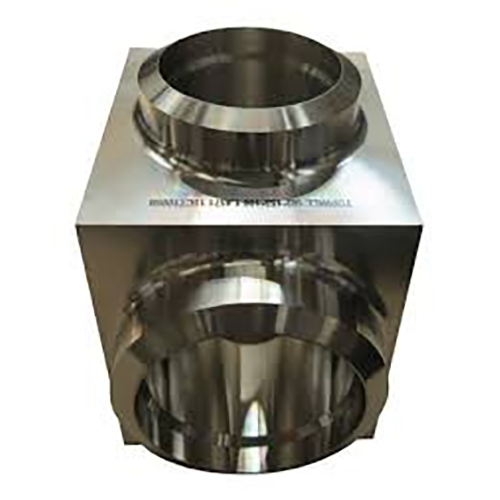
Producing the required exterior polish for a processed workpiece stands as fundamental.
- Surface finish callouts in engineering drawings provide the exact specifications for the finish of a part
- Drawings commonly cite Ra, meaning root mean square average, to measure texture
- Understanding these callouts is fundamental for ensuring manufactured parts meet performance requirements
- Specified roughness affects lubricant distribution, frictional performance, and durability
- Right interpretation of surface notes ensures attainment of the sought condition
CNC Machining and Precision Engineering

Numerical control machining stands as an advanced production approach through G-code driven routines the hardware sculpts intricate parts accurately.
- Automated machining allows fabrication of accurate parts from multiple materials
- Broad CNC applicability benefits industries like aerospace, automotive, and healthcare
- CNC processes produce uniform parts with high repeatability over runs
From early-stage prototyping through mass manufacturing CNC machining underpins modern fabrication
CNC Spec Interpretation
Interpreting CNC data often seems complex on first review
Yet armed with basic knowledge and methodical steps you can manage technical specifications
Initiate by spotting principal specs like spindle speed, feed rate, positional accuracy, travel limits, controller
Every listed attribute influences the equipment’s operational capacity.
By way of example raised spindle rpm benefits soft stocks while boosted feed enhances output.
Understanding these relationships will allow you to select the right CNC machine to match your specific requirements
Remember to consult the manufacturer's literature thoroughly.
Manufacturer docs typically supply key details and decode technical phrasing
Comprehensive Guide to CNC Machinery
Numerical-controlled machines are computer-guided systems for accurate automated manufacturing across substrates They function by reading numerical G-code commands that drive cutting heads and actuators.
- Common CNC classes include milling machines, turning lathes, routing systems, plasma cutters
- Cutting methods suit steels, plastics, woods, and layered composites
- Besides that CNC systems permit speedy prototyping and short production runs for businesses and research groups
Computer Numerical Control Machines: An Overview
These tools showcase a blend of mechanical exactness and intelligent software command Adaptive tools rely on coded programs to manufacture from simple elements to detailed structures Essential concept transposes digital designs into manufactured reality.
- Machine-controlled machining
- Programmatic production integration
This process involves a series of precise movements guided by the computer program Machine operators handle parameter selection, process monitoring, and quality confirmation.
The Role of Surface Finish in CNC Machining
Obtaining required finish during machining is essential It impacts both functional performance and surface look Stock properties, cutting settings, and finishing operations determine surface result.
Refined surfaces boost longevity; rough surfaces can diminish functional performance Programmed machining features assorted toolpaths and cutters to deliver specified finishes.
- Such as employing varied cutter geometries |ceramic cutters|cutting velocit
 y selections to shape surface
y selections to shape surface - Furthermore secondary operations such as polishing, grinding, or sanding enhance finish
Understanding the relationship between machining parameters and surface finish is essential for achieving optimal results in CNC machining operations.
CNC Basics — Operation and Uses
It constitutes a high-precision manufacturing approach using programmed machine tools to form parts from many materials They process digital commands to produce elaborate components repeatedly Awareness of G-code, tooling, and machine operation aids successful production
Sectors served include aerospace, automotive, manufacturing, medical, and electronics fields From intricate propeller parts to exacting mold inserts, CNC produces accurate geometries
Surface Finish Specification Guidelines
Correctly specifying finish is vital for CNC-produced components It assures alignment with required performance and visual expectations Manufacturers often rely on Ra (roughness average) to represent surface finish This numerical value expressed in micrometers inches or millimeters indicates the average height of surface irregularities.
Take into account target smoothness and how the part will be used when calling out finish

Generally fine finishes benefit components requiring precision alignment and tolerance
Rougher textures often suit parts intended for grip or high-friction contact
Utilize a clear and concise callout in your engineering drawings to communicate the desired surface finish Specify the Ra metric and note any secondary treatments or special machining steps.
Consider that thorough finish callouts underpin quality manufacturing
CNC Machine Types and Their Functions
Numerical control machining comprises numerous machine types engineered for diverse applications They integrate CAD-driven toolpaths to guide cutters for precise component production.
- Boring and drilling equipment generate accurate holes and internal features
- Lathes excel at producing round parts such as shafts rods and bushings
- Laser cutters harness concentrated energy beams to slice through materials with exceptional accuracy and minimal heat distortion
Pick machines based on material compatibility, feature detail, and dimensional demands Machine-specific strengths enable applications in fields ranging from aerospace to automotive engineering.
Reaching Optimal Surface Quality Using CNC
Attaining top-quality surfaces is critical in fabrication and CNC techniques facilitate that achievement By combining feed optimization spindle settings and cutter geometry selection operators reduce patterning and improve finish Furthermore the utilization of high-quality tooling materials and proper lubrication techniques contributes to a smoother finish Appropriate strategy choice combined with accurate setup produces excellent surface outcomes.
Achieving Surface Finish in CNC Programming
Managing finish via CNC code is important to secure required surface properties Selected feeds speeds and tool geometry directly shape the resulting surface profile Thoughtful parameter choices coupled with correct lubrication help produce polished surfaces.
- Additionally routine tool checks and upkeep maintain consistent finish quality In addition periodic tool servicing and checks secure consistent surface quality Furthermore regular tool maintenance and inspection are essential for ensuring a consistent and high-quality surface finish over time
- To improve surface outcome account for material, roughness target, and application
- Toolpath simulation enables testing parameter impacts to cut down surface errors
- Also ongoing tool care and inspection support sustained finish reliability
